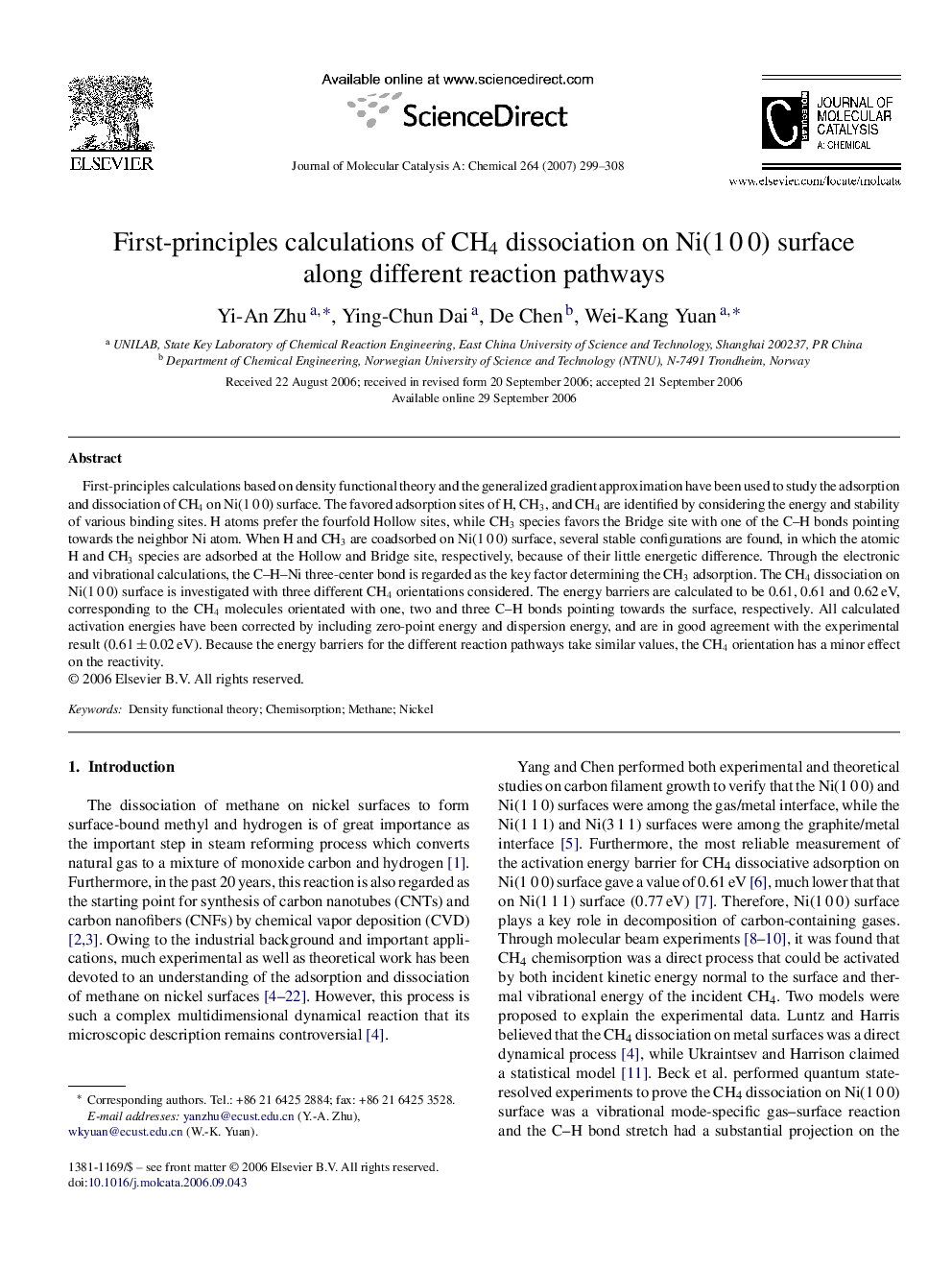| Article ID | Journal | Published Year | Pages | File Type |
|---|---|---|---|---|
| 68851 | Journal of Molecular Catalysis A: Chemical | 2007 | 10 Pages |
First-principles calculations based on density functional theory and the generalized gradient approximation have been used to study the adsorption and dissociation of CH4 on Ni(1 0 0) surface. The favored adsorption sites of H, CH3, and CH4 are identified by considering the energy and stability of various binding sites. H atoms prefer the fourfold Hollow sites, while CH3 species favors the Bridge site with one of the C–H bonds pointing towards the neighbor Ni atom. When H and CH3 are coadsorbed on Ni(1 0 0) surface, several stable configurations are found, in which the atomic H and CH3 species are adsorbed at the Hollow and Bridge site, respectively, because of their little energetic difference. Through the electronic and vibrational calculations, the C–H–Ni three-center bond is regarded as the key factor determining the CH3 adsorption. The CH4 dissociation on Ni(1 0 0) surface is investigated with three different CH4 orientations considered. The energy barriers are calculated to be 0.61, 0.61 and 0.62 eV, corresponding to the CH4 molecules orientated with one, two and three C–H bonds pointing towards the surface, respectively. All calculated activation energies have been corrected by including zero-point energy and dispersion energy, and are in good agreement with the experimental result (0.61 ± 0.02 eV). Because the energy barriers for the different reaction pathways take similar values, the CH4 orientation has a minor effect on the reactivity.
Graphical abstractFirst-principles calculations based on density functional theory and the generalized gradient approximation have been used to study the adsorption and dissociation of CH4 on Ni(1 0 0) surface. Three reaction pathways starting from different CH4 orientations are considered. Because the energy barriers for the different reaction pathways take similar values, the CH4 orientation has a minor effect on the reactivity. Figure optionsDownload full-size imageDownload as PowerPoint slide
